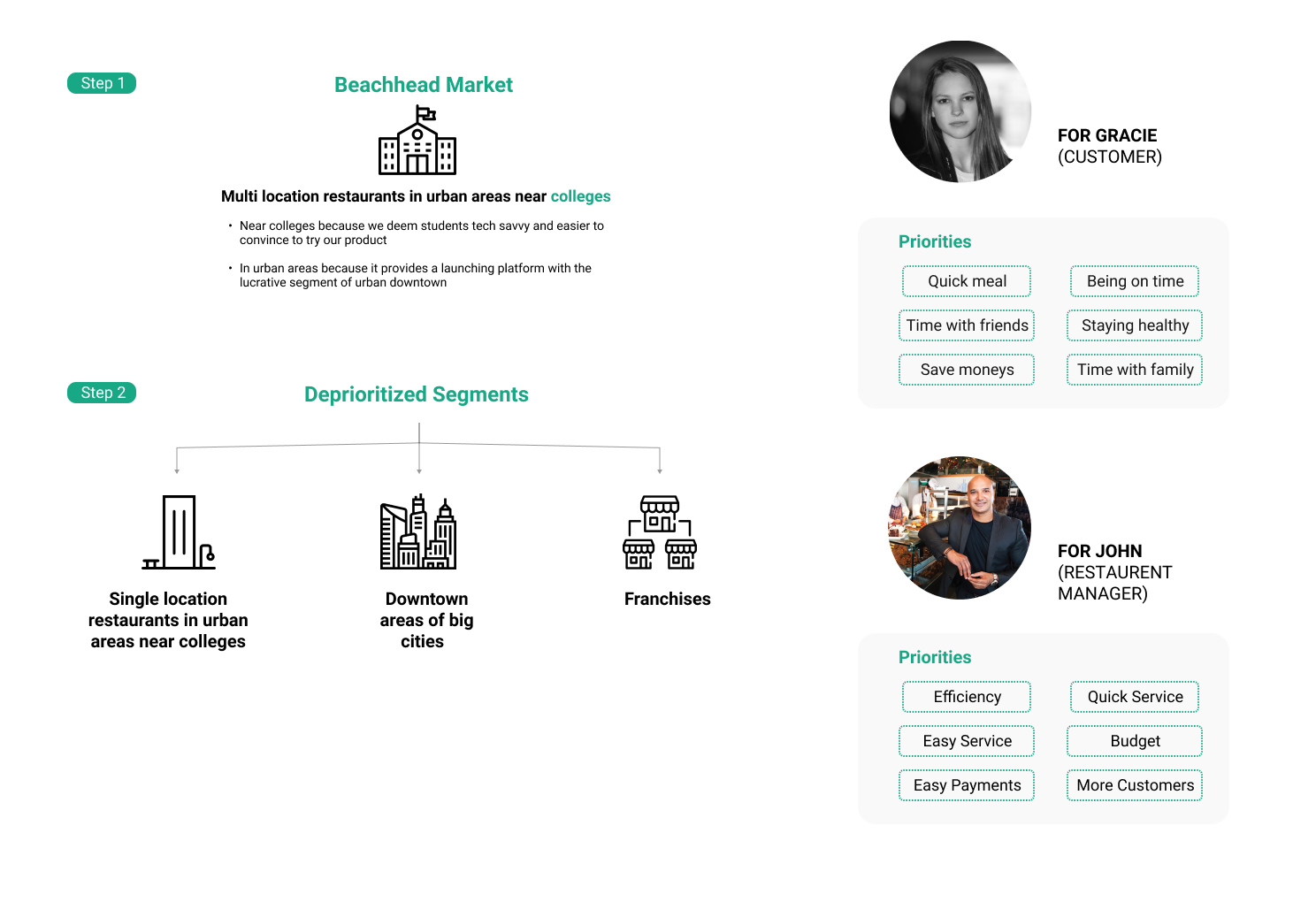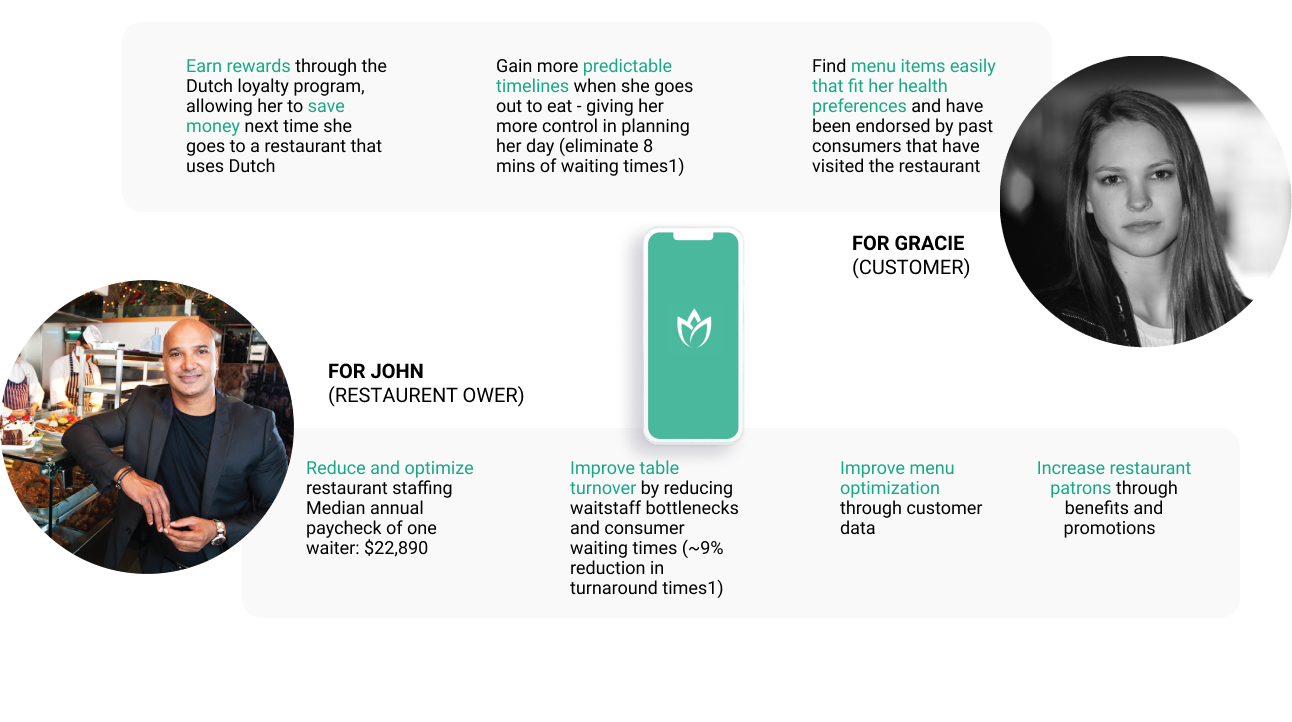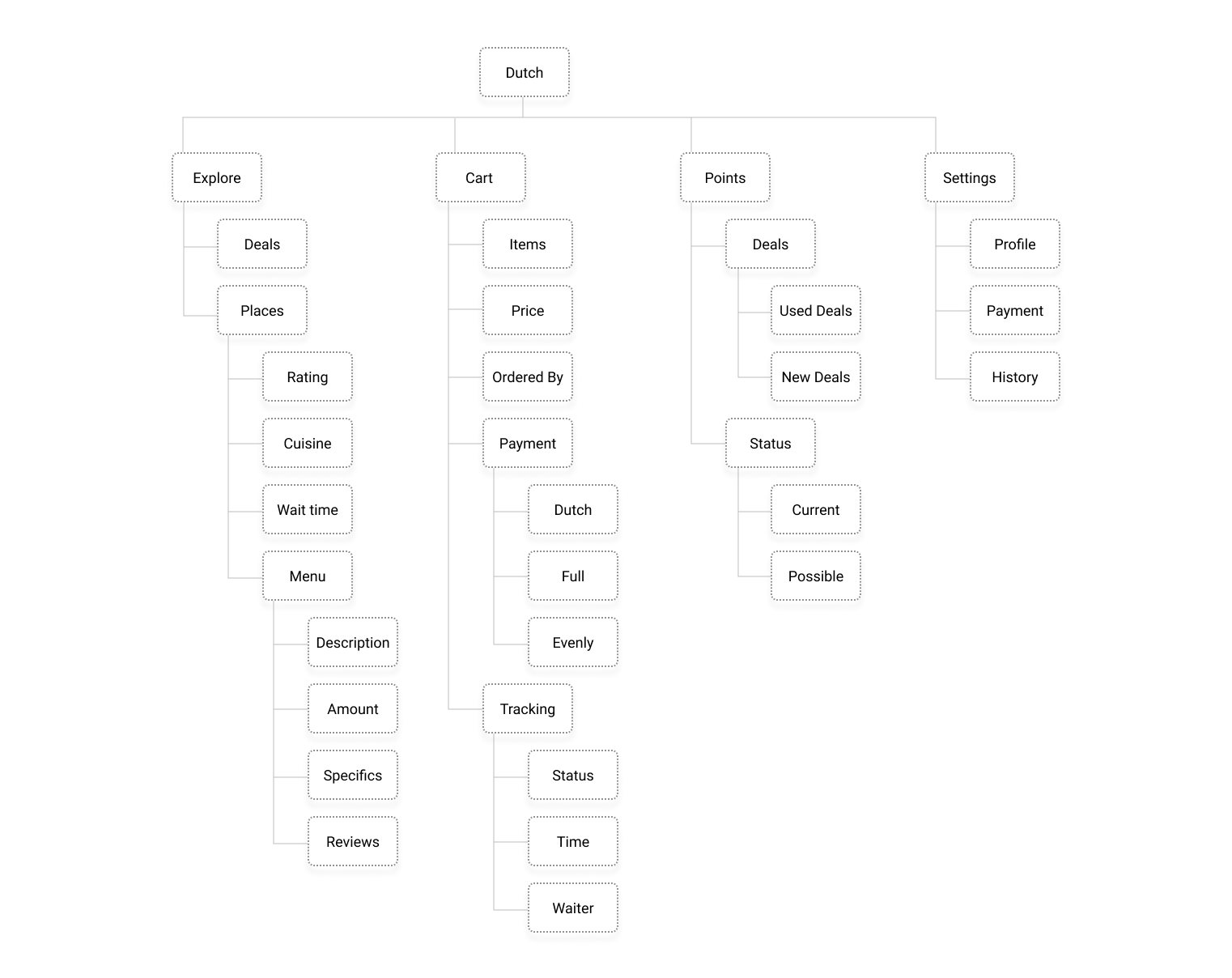
Dutch.
Integrating the casual dining experience.
DEsign TEAM: SREENI, JOSEPH WUBUSINESS TEAM: SREENI, GABRIELLE R, EDUARDO RUFFO, DEIRDRE CORLEYMY ROLE: UX DESIGN, BUSINESS TEAM MEMBERDURATION: 8 WEEKSSummary
Analog processes in casual dining result in poor customer service and reduced operational efficiency of restaurants. Dutch is an easy to use platform for managing the entire casual dine-in experience.
RESEARCH Problem
The manual processes in the casual dining space has led to inefficiencies in the process. This has effected the customer as well as restaurant manager.
ResearchMarket and Personas
Since this is an extremely diverse space, we chose to select beachhead market of restaurants in urban areas near colleges. This gives us a densely packed area of restaurants.
More importantly, it gave us two mostly homogeneous end user groups - students and budget restaurant owners.
RESEARCHUser Interviews
“Main concern is speed. When restaurants are honest about how long it takes for food to get to me then I consider it a good place to go. The more efficient a restaurant is the better. I have other places to go to and classes to be at.”
-Student Diner
“People are not patient. They are rude when their food has not come out. People don’t understand the difficulty to track orders. It would be useful for people to have a way to track the speed of their orders. Many times the orders are tracked on paper order and then the progress is transmitted verbally.”
-Restaurant Manager
IDEATELearnings To Action
From our interviews, it became clear that the end users had specific goals - time and budget (for the student) and efficiency and budget (for the owner).
These could be solved by two general categories that we brainstormed.
Realtime Data
Addition of Time Component: Customers wanted the ability to check current speed of order. Owners felt less pressured when customers had access to order tracking data.
Introduction of Order Tracking: Owners wanted a way to effectively track current tables/orders/wait times.
Dynamic Menu with granular details
Prioritization of individual dishes: Users shared the common pain point of being unable to easily select a specific dish at a restaurant.
Highlighting elements such as speed/ambience/cost: Interviews with different end users revealed different subsections of the customer population cared about different needs.
IDEATELife Cycle
IDEATE Features
Solve for efficiency: Waiters do not have to be available for customers to complete tasks like paying or splitting the bill.
Solve for time and data: Customers have access to high level data like the status of their order or time it takes to get it, helping them schedule their time better.
Solve for efficiency and data: Menus are dynamic and have granular data like time to create or allergens. They also have individual customer reviews for dishes helping users pick better.
IDEATEInformation Architecture
Prototypes High Fidelity
1.
Users can explore restaurants near them. Using the data we have collected on their food preferences in restaurants, we can also target the deals they view.
2.
Using a QR code, users join a specific table and are able to begin the process of ordering without ever having to wait for a server or go up to the counter.
3.
The menu gives users granular information such as best rated dishes, customer reviews, allergens etc.
4.
Users have the ability to track orders and view the estimated time until their order gets to them. This allows them to stay on track and manage their time well.
5.
Rather than manually splitting the bill, users have the ability to choose how they pay within the app, as well as high level information on what everyone at their table ordered.













